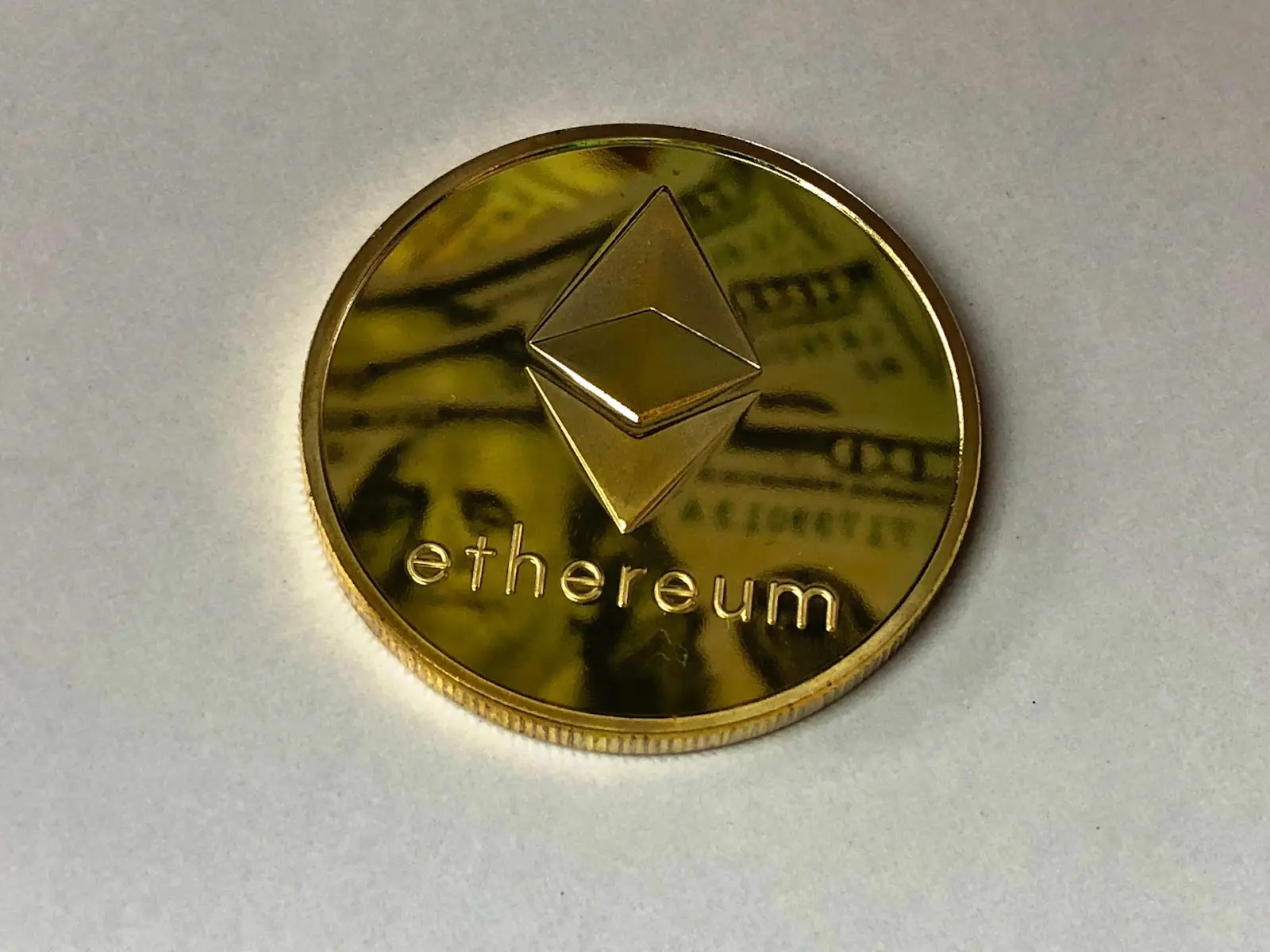What Is an Ethereum Improvement Proposal & Why Does It Matter?

ethereum
The Ethereum network is global and features hundreds of millions of unique addresses. On top of that, it’s constantly growing and evolving, whether through the introduction of new features and systems or the modification of current ones. An Ethereum Improvement Proposal (EIP) is like a blueprint for these changes.
But how exactly do Ethereum Improvement Proposals work? And better yet, why are they important to you as a retail investor?
Join us in this article as we explore the intricacies surrounding EIPs; you will learn what they are and why they are crucial to the future of Ethereum. Whether you’re a seasoned crypto veteran or an eager newcomer, you’ll surely want to know more about the world’s most important altcoin. So, let’s get started!
What Is an Ethereum Improvement Proposal (EIP)?

Ethereum Improvement Proposals represent a way for the community and developers to suggest changes or upgrades to the Ethereum blockchain. In fact, you can think of them as a suggestion box for the community.
EIPs were created in 2015 based on the Bitcoin Improvement Proposals (BIPs), which were based on the Python Improvement Proposals (PEPs).
Like with any complex software or platform, there are times when Ethereum needs to be updated, fixed, or improved with new features. When someone identifies a problem or an opportunity for an upgrade, they can draft an EIP and submit it for review.
EIPs are open and transparent, allowing anyone on the network to examine them and participate in the voting process. This approach ensures that every change to the Ethereum network is meticulously analyzed and favors the majority of participants.
Furthermore, you don’t have to be an expert to submit an EIP. Anyone with a good idea and sufficient knowledge can take part in blockchain development. There are rules and guidelines to follow, which are outlined in the EIP-1. Even then, there are EIP editors to ensure these suggestions are sound before submitting them for voting or returning them for revision.
EIP Standard Decision Process
For EIP to be rejected or implemented, it needs to go through the standard decision process. This process features five stages, which are represented by status terms, which include:
- Idea. This is the initial, informal stage of an EIP, when it isn’t officially tracked within the repository.
- Draft. The draft represents the first formal stage in the EIP decision process—an idea written down following the rules and guidelines outlined in the EIP-1. The process involves submitting a pull request for the EIP to the GitHub repository. Authors can ask for feedback and editor assistance.
- Review. While in “review” status, an EIP is analyzed and discussed by the community. Network users are welcome to add feedback and suggest changes, and the authors are recommended to keep working on their EIP.
- Last Call. This is the last step of the review stage. It means that the proposal is refined and ready for implementation. At this point, an EIP editor can set a date for users to express any final concerns. This period must last at least two weeks, and if any bigger changes need to be made after it, an EIP moves back to the review stage.
- Final. The “Final” status means that the EIP has been approved and that it’s now part of the Ethereum protocol. It represents a successful implementation of the idea, thoroughly audited by the editors and the community.
There are three more specific EIP status terms, which are:
- Stagnant. This means that an EIP has been inactive for six months or more.
- Withdrawn. If an author withdraws the proposed EIP, it can’t reach final status. The only solution is to create a new EIP.
- Living. “Living” EIPs never reach final status, as they are continuously updated.
Types of EIPs
There are different types of EIPs based on the kind of improvement that they are proposing. These include:
#1. Standard Track EIP
Standard Track EIPs represent proposals for changes to the Ethereum protocol itself. You can think of these changes as updates to the operating system on your PC or smartphone. They can introduce new features or modify and improve existing ones, and the end goal is to create a more efficient and capable system.
Standard Track EIPs include sub-types, which are core, networking, interface, and ERC EIPs. They can introduce new opcodes, change consensus mechanisms, suggest scalability improvements, and more.
#2. Core EIP
Core EIPs are a subset of Standard Track EIPs that deal with core updates to the Ethereum protocol. They are like critical system updates for your computer or smartphone. These Ethereum Improvement Proposals suggest changes to the essential mechanics of the system, such as transactions and data storage.
For instance, EIP-3675, which proposed that Ethereum’s consensus mechanism switch from proof of work to proof of stake, was a Core EIP.
#3. Networking EIP
Networking EIPs, as their name suggests, deal with the peer-to-peer layer and network protocols of Ethereum. The purpose of their implementation is to improve the way different parts of the blockchain communicate with each other and ensure a smooth and efficient data flow.
#4. Interface EIP
Interface EIPs represent suggestions for applications built on top of Ethereum. The end goal is to create an ecosystem of applications that work well and give users a consistent and pleasant experience.
#5. ERC EIP
ERC stands for Ethereum Request for Comments. It refers to standards for applications on Ethereum. ERC EIPs usually define what rules smart contracts on Ethereum should follow to ensure the interoperability of different applications. One of the most notable examples is ERC-20, which represents a technical standard for smart contracts.
#6. Meta EIP
Meta EIPs deal with the EIP processes themselves rather than the functionalities of the Ethereum network. They are about improving the methods of making suggestions and updates. One of the best examples of a Meta Ethereum Improvement Proposal is EIP-1, created to explain the purpose of these documents and provide guidelines for creating them.
These EIPs don’t have a direct impact on the blockchain, and there’s often no need for a community consensus for them to reach a final state. Regardless, their influence on the process of network development is invaluable, so users can’t generally ignore implemented Meta EIPs.
#7. Informational EIP
Informational EIPs do not propose blockchain changes or new features. Instead, they have a descriptive nature and point out certain issues or give the community various information about the network.
Like Meta Ethereum Improvement Proposals, Informational EIPs generally don’t require consensus from the community, but they also don’t need to be recommended. As a result, they aren’t mandatory, and users are usually left to choose whether they want to follow or ignore the advice given in Informational EIPs.
Why Are EIPs Important?

Ethereum Improvement Protocols are an important part of the Ethereum ecosystem. In fact, they are the foundation for the platform's progress and evolution, ensuring the network remains tailored toward users’ needs.
These are also of great importance to developers building on Ethereum since they provide a clear framework and easy-to-follow guidelines while fostering a collaborative environment. On the other hand, EIPs benefit users, too, as they ensure the platform advances in a way that brings enhanced safety, handy functionalities, faster transactions, reduced fees, and more.
Another reason that makes Ethereum Improvement Protocols invaluable is that they allow the network to remain secure and updated in an ever-changing world of blockchain and cryptocurrency. These suggestions help the network overcome technical challenges and security threats.
Lastly, EIPs represent a crucial component of Ethereum’s core principle—decentralization, which is achieved by allowing anyone from the community to create EIPs or vote on suggested proposals. So, in other words, everyone, from active users and developers to crypto holders, has a say in the blockchain’s future.
Examples of Ethereum Improvement Proposals
One of the best ways to understand Ethereum Improvement Proposals is through EIP examples. Some of the most notable ones include:
- EIP-1 is the first and most notable living improvement proposal. It defines what EIPs are, what the reasons behind their creation are, and what their purpose is. Among other things, EIP-1 also defines the types of EIPs, outlines the workflow, and provides plenty of helpful resources to anyone who wants to make them.
- EIP-712 deals with typed data and the user's signature. Its purpose is to improve user experience by allowing them to better sign content, enhance security, and reduce the risk of malicious attacks.
- ERC-721 is the non-fungible token standard. Its purpose was to establish how users would interact with NFTs.
- ERC-6551 is an improvement proposal in review that builds on ERC-721. It aims to remove some of the limitations NFTs have when it comes to interaction with other on-chain assets.
- EIP-1559 is a core EIP that brought fee market changes to the Ethereum blockchain. It modified the previous auction mechanism into a fixed initial fee that would then be adjusted based on the circumstances. This resulted in fewer delays, more efficiency, and better blockchain stability.
- ERC-4337 is a draft EIP and an account abstraction proposal. The goal is to remove the need for users to have EOAs (Externally Owned Accounts) and only use smart contract wallets.
- EIP-4844, titled “Shard Blob Transactions,” aims to further reduce transfer fees that Layer 2 solutions like Arbitrum and Optimism offer by modifying the sharding system.
- EIP-3675 brought one of the biggest changes in Ethereum’s history. It was the Ethereum Improvement Proposal that upgraded the network to Ethereum 2.0 with a proof-of-stake consensus mechanism, replacing the energy-inefficient proof-of-work system.
Key Takeaways
Now that we’ve journeyed through the intricacies of Ethereum Improvement Proposals, it’s apparent that they are much more than mere suggestions or technical documents. They represent the lifeblood of the platform, a testament to collaboration, and a key component of decentralization.
Additionally, EIPs are behind the network's progress, security, and even popularity. As a result, anyone looking to invest in Ethereum or participate in the blockchain should have some level of understanding of EIPs. And finally, since the world of cryptocurrency keeps growing, keeping track of Ethereum Improvement Proposals can help you better prepare for the future!